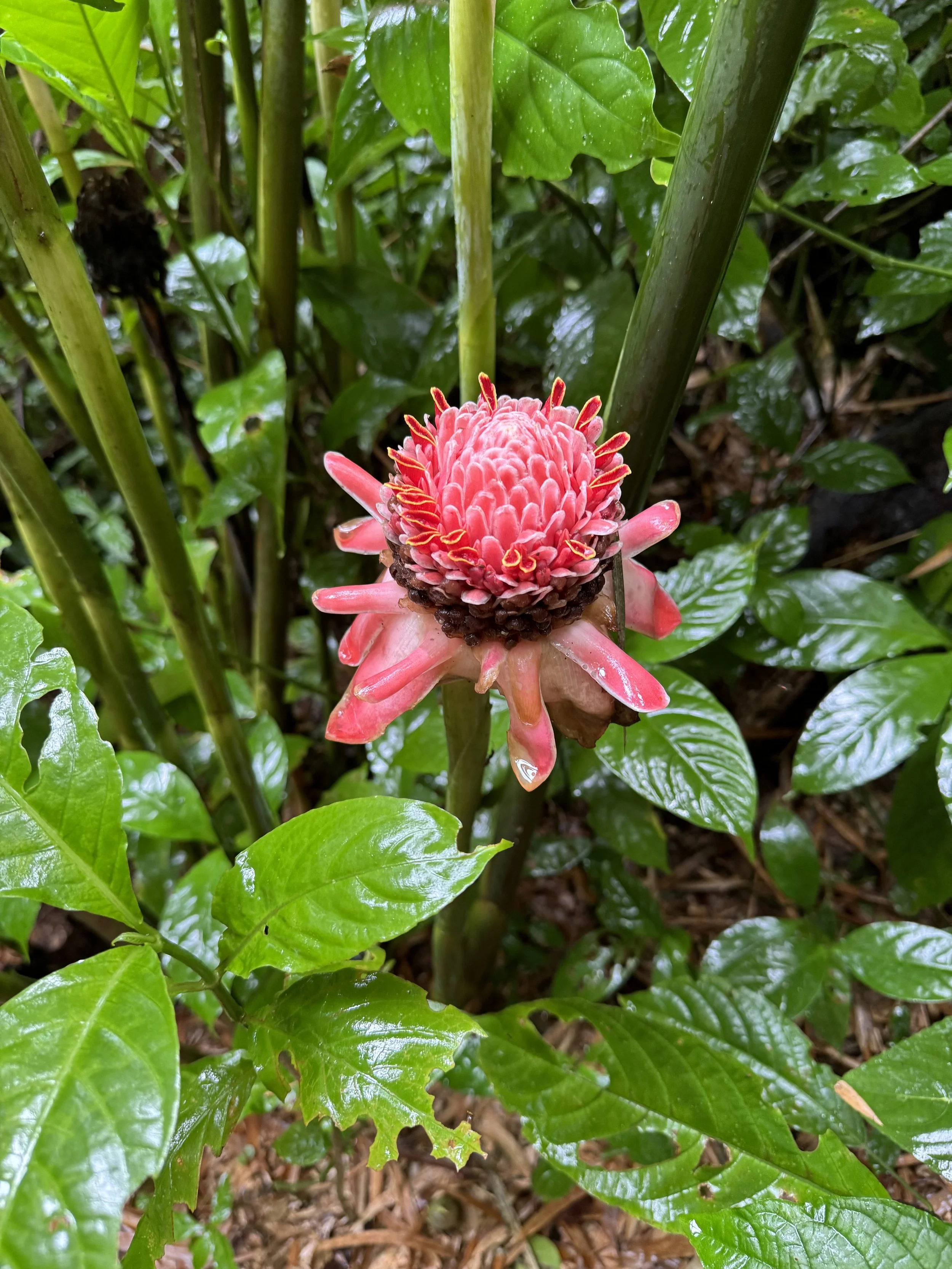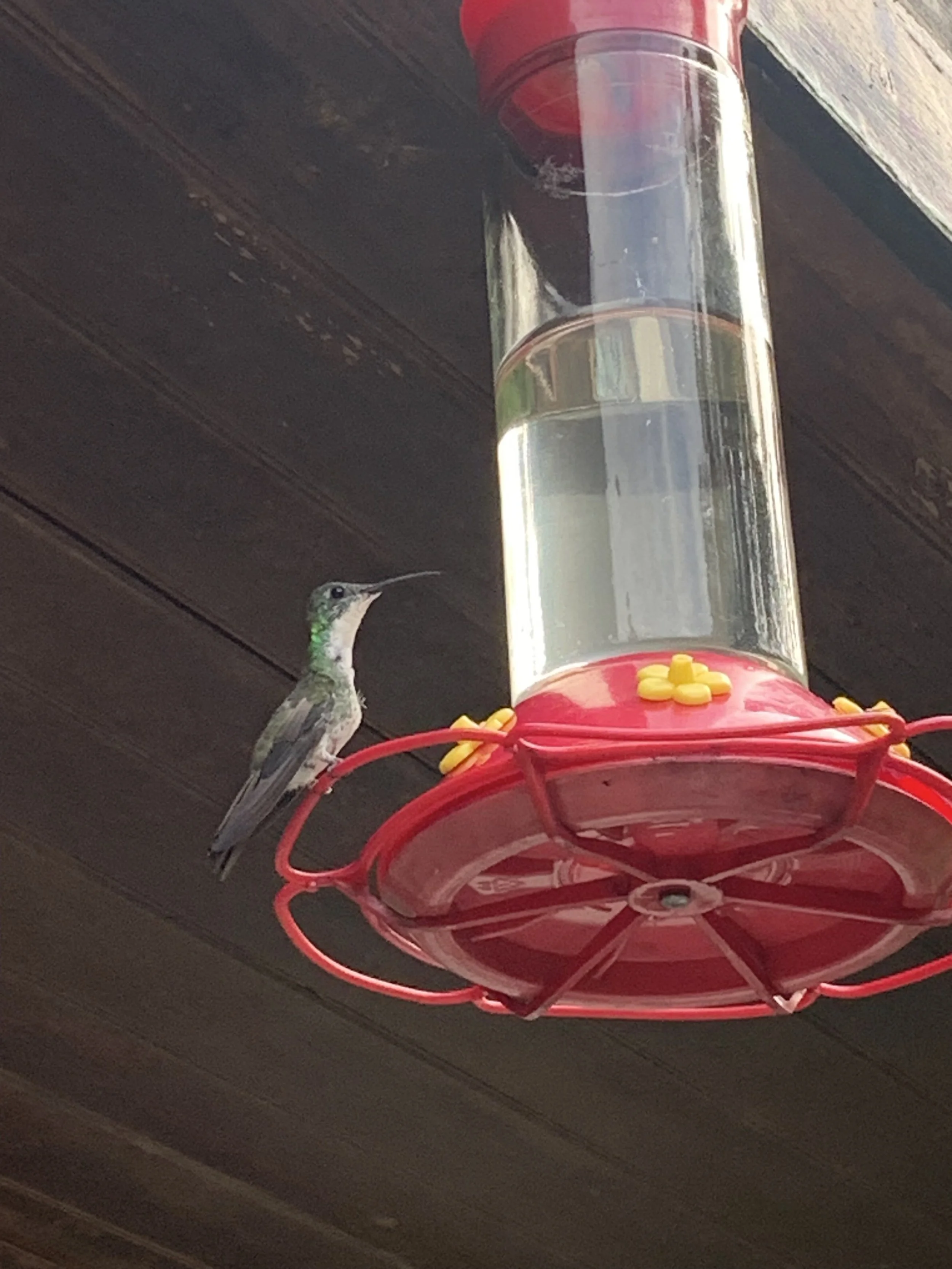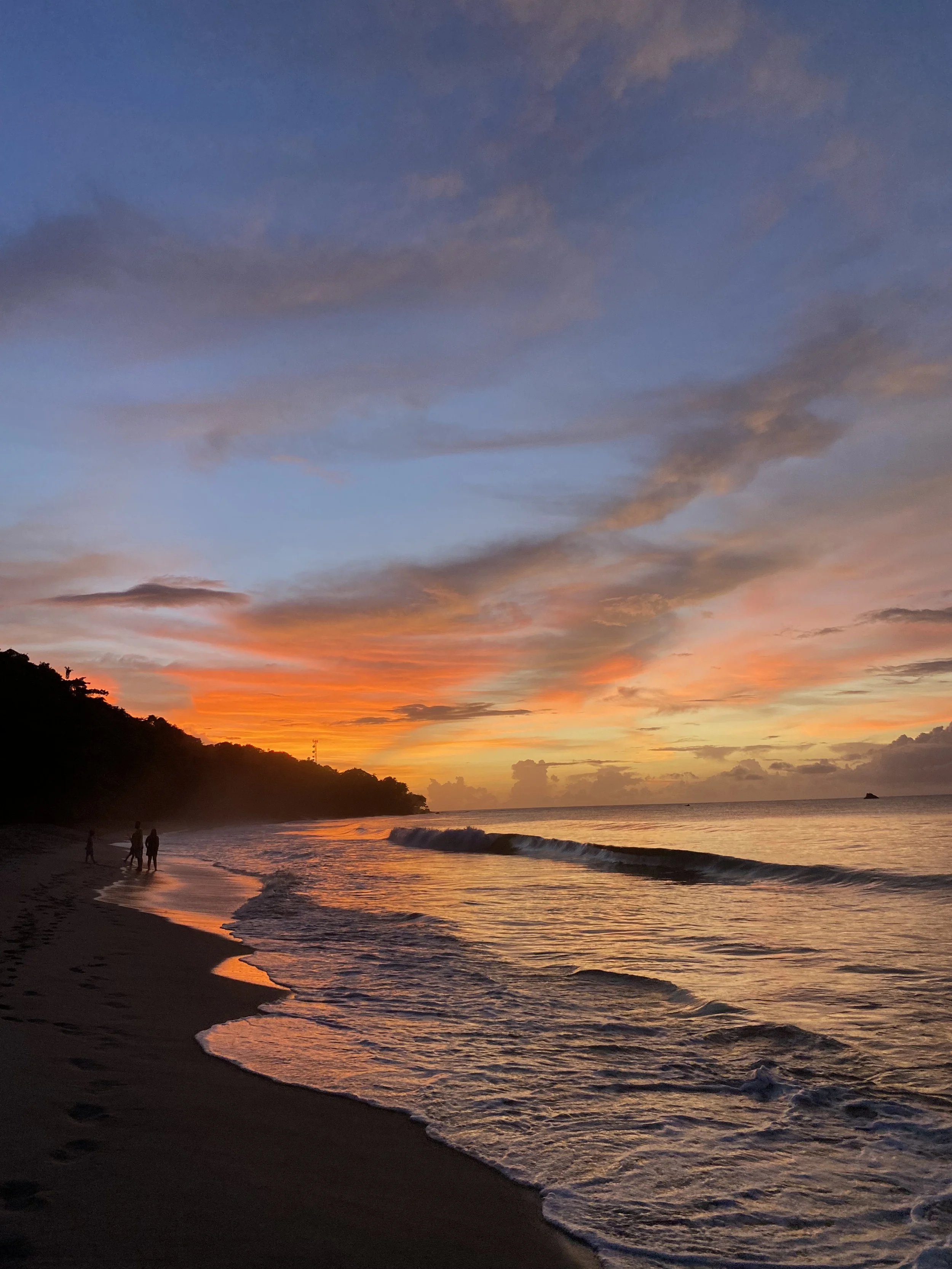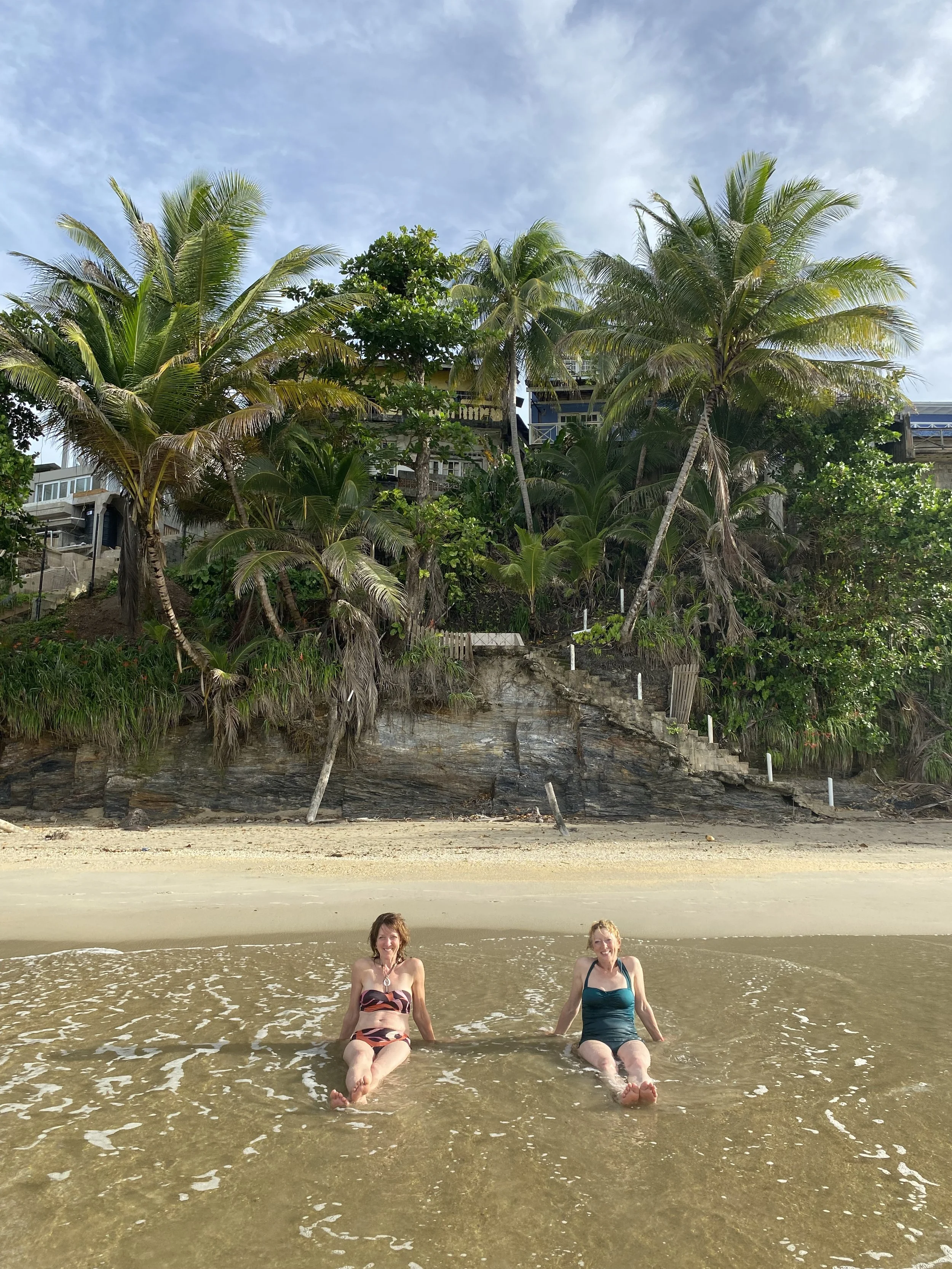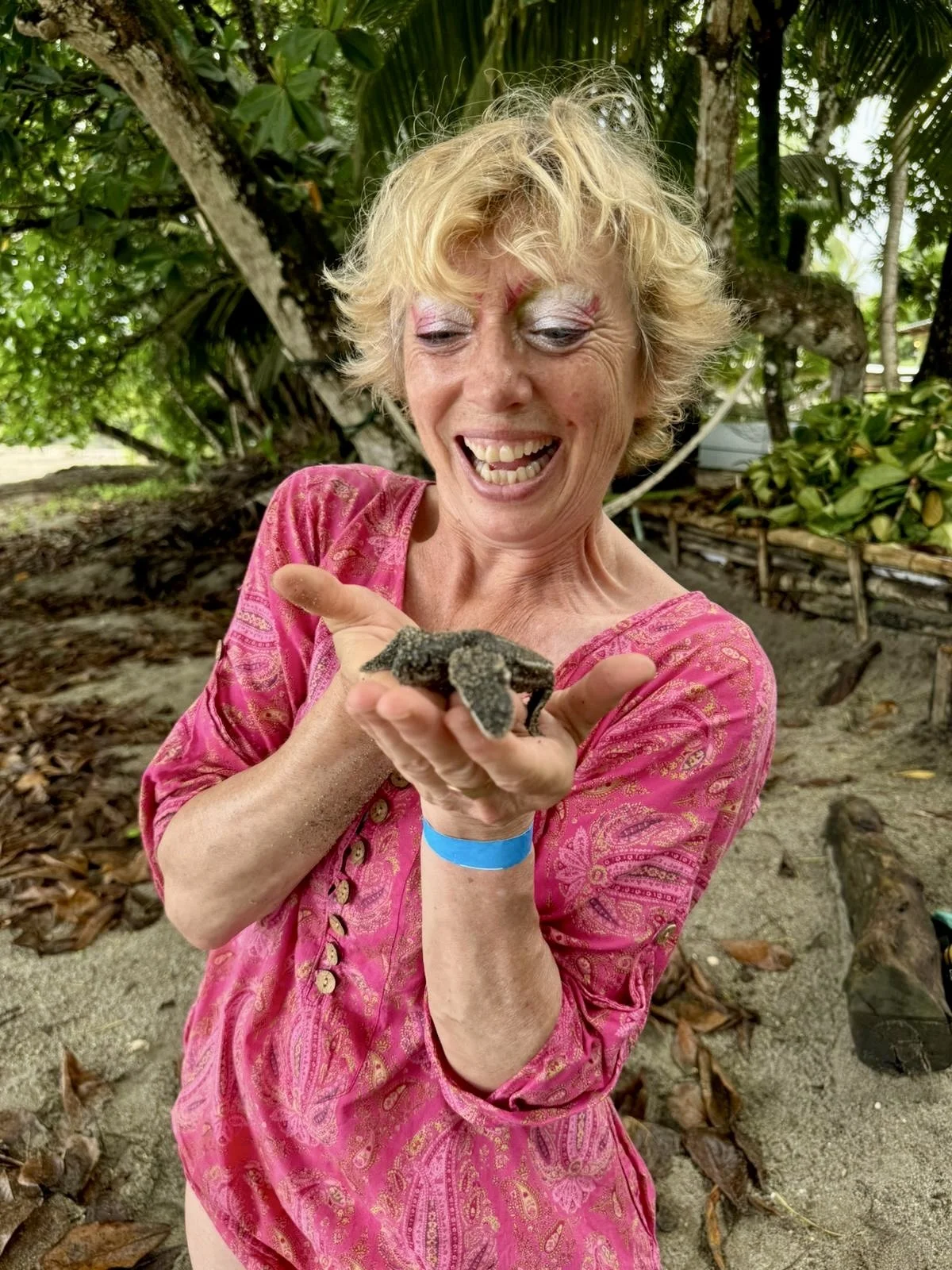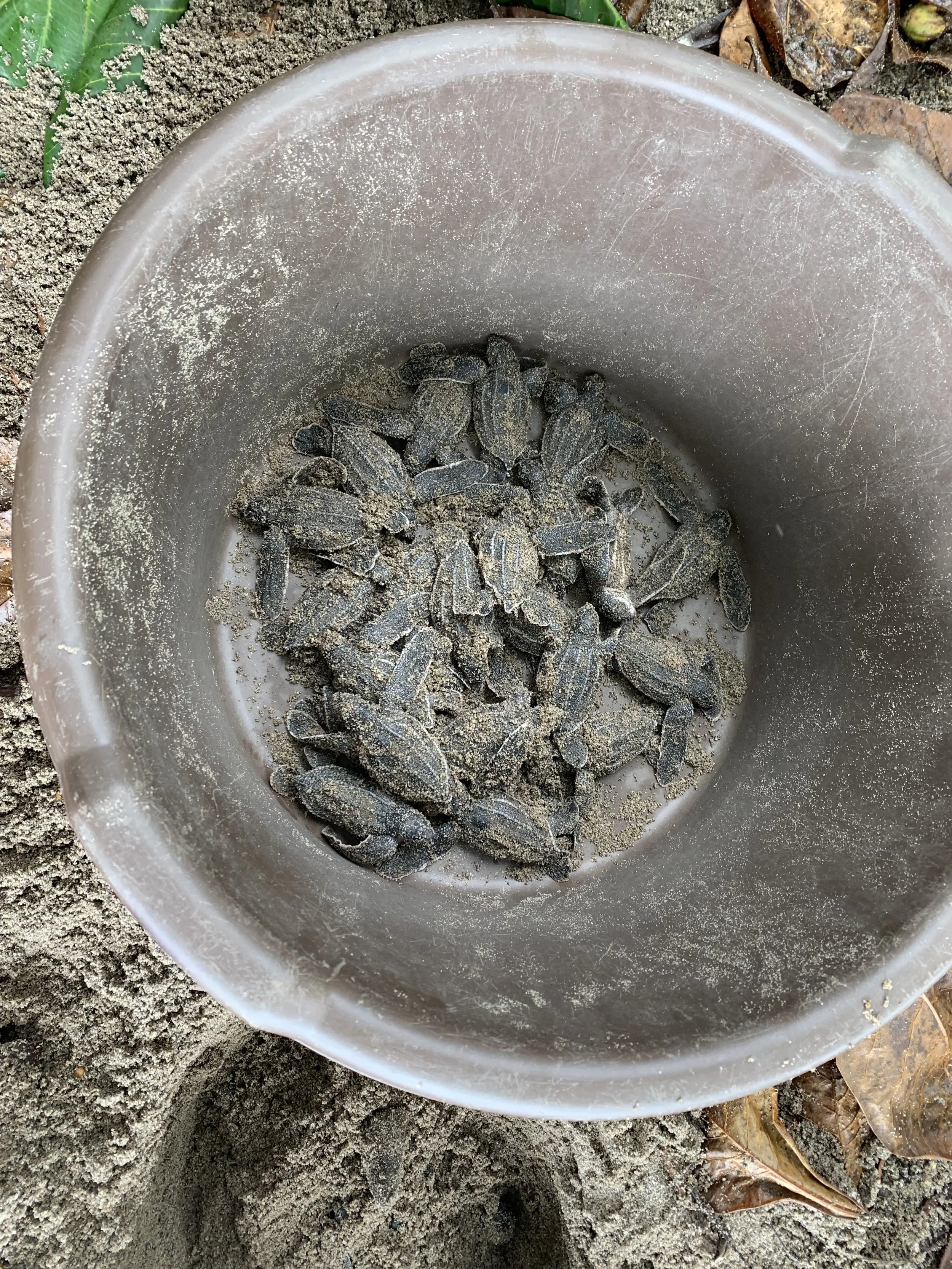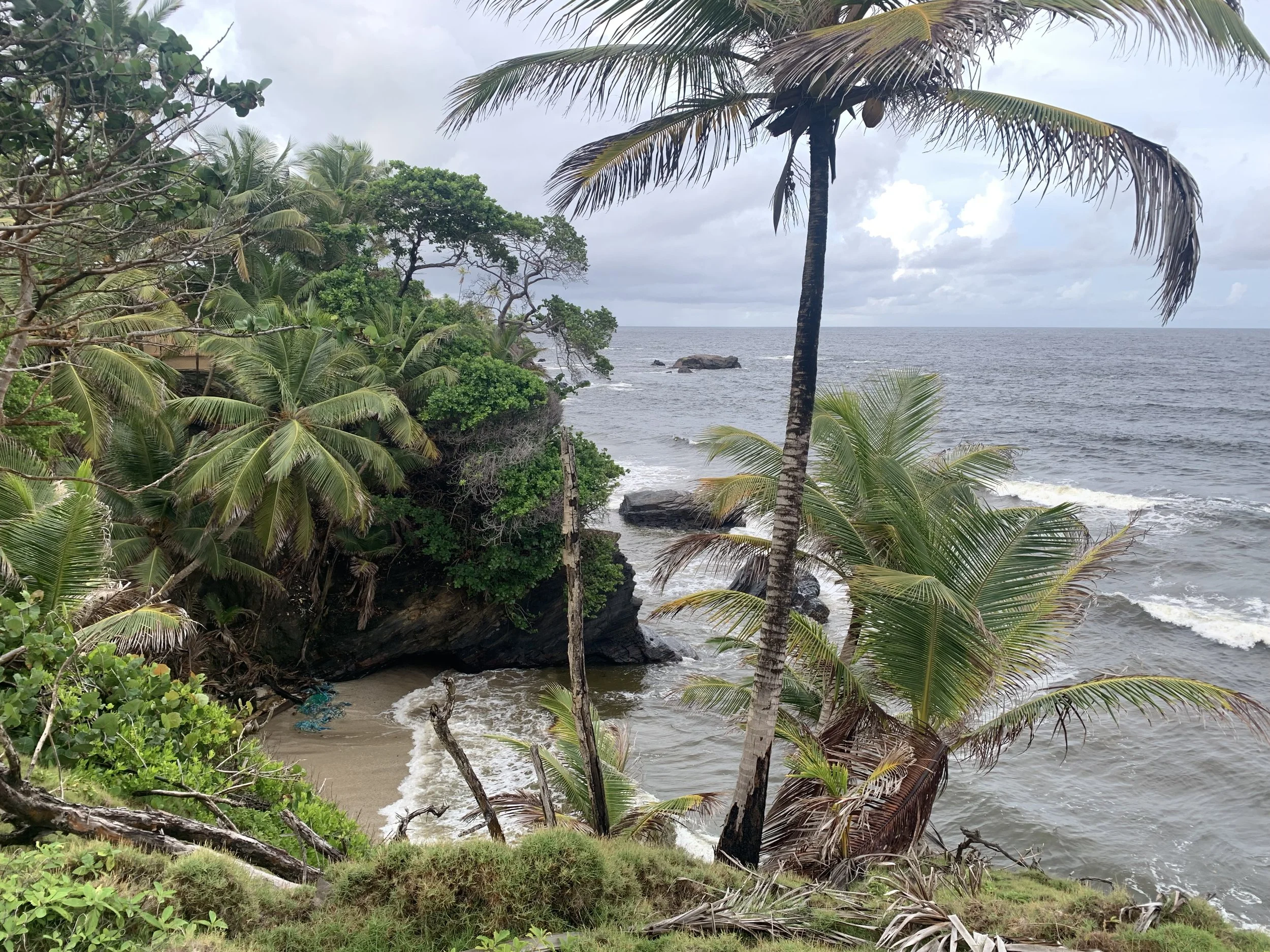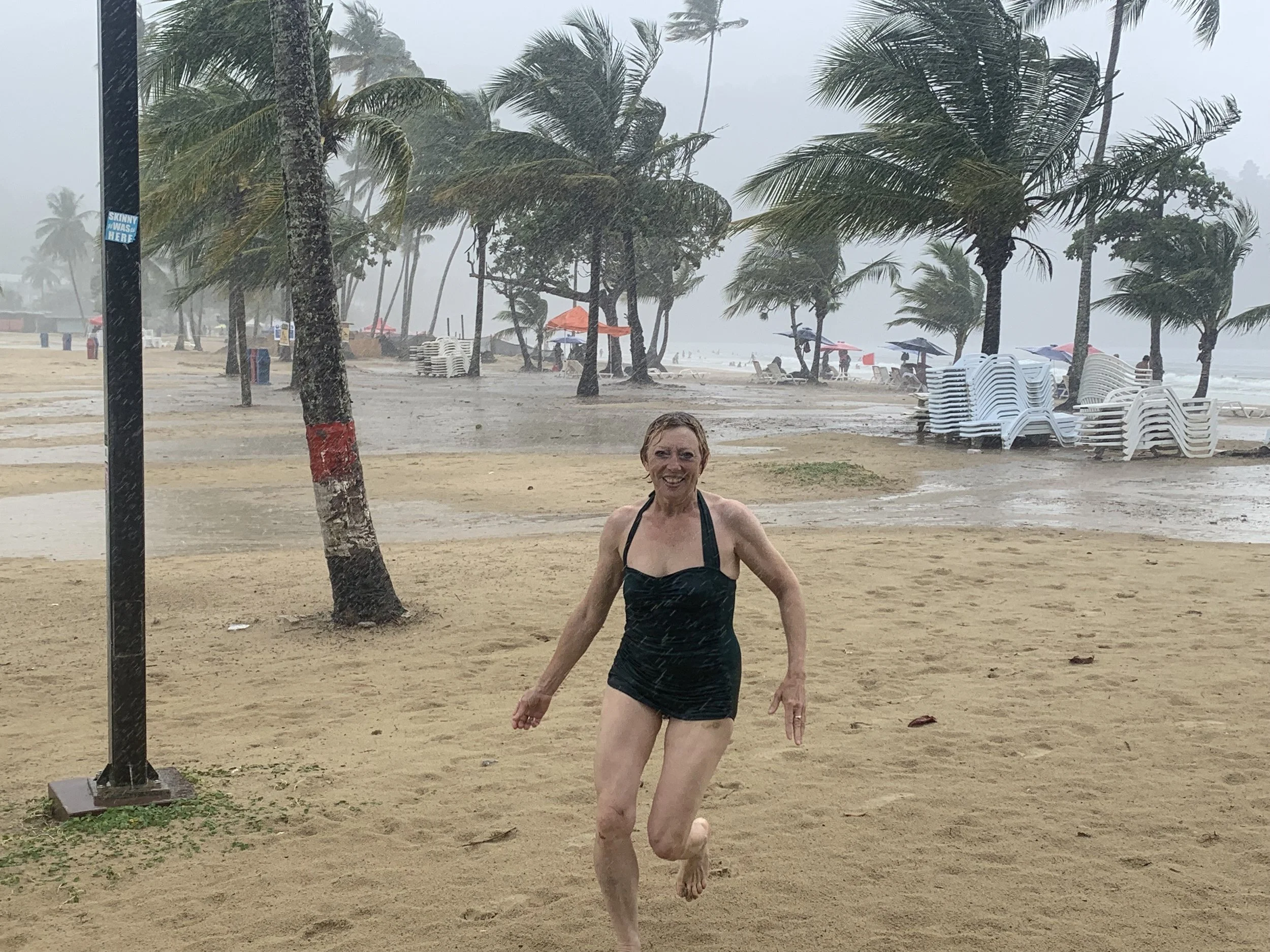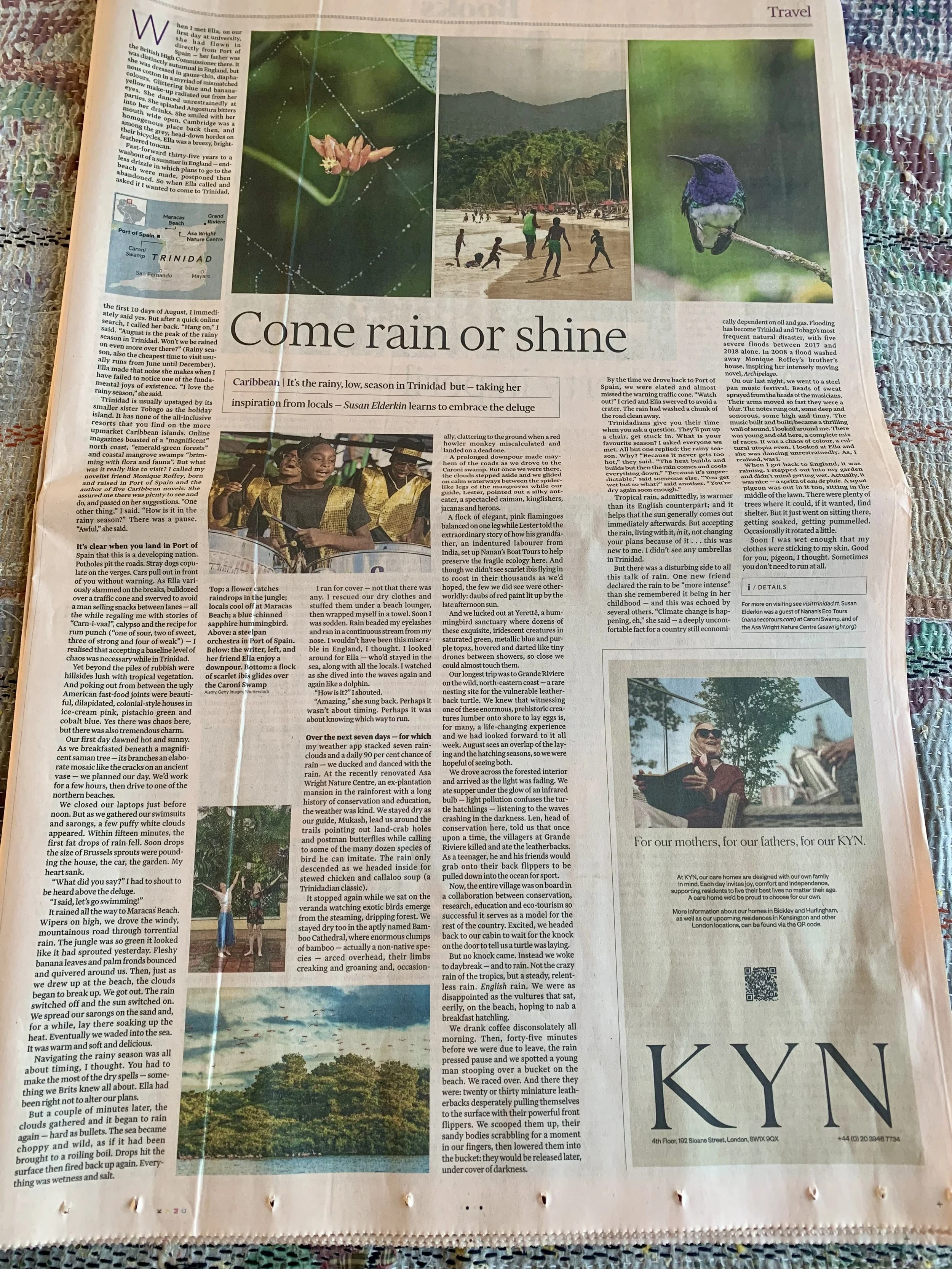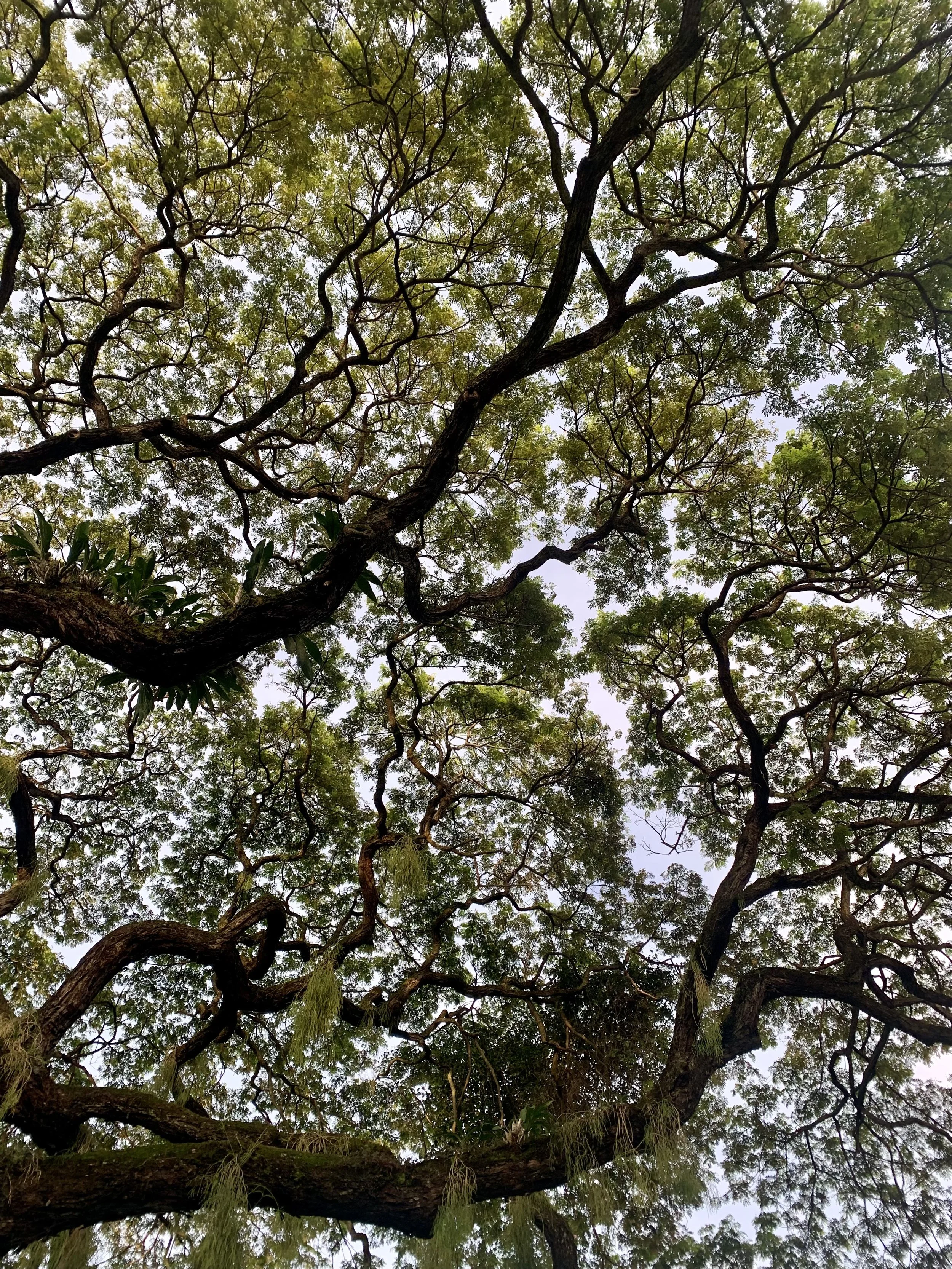
Wet and Wonderful: Discovering the joys of the rainy season in Trinidad
Financial Times, 4 October 2024
When I met Ella, on our first day at university, she had flown in directly from Port of Spain – her father was the British High Commissioner there. It was distinctly autumnal in England, but she was dressed in gauze-thin, diaphanous cotton in a myriad of mismatched colours. Glittering blue and banana-yellow make-up radiated out from her eyes. She danced unrestrainedly at parties. She splashed Angostura bitters into her drinks. She smiled with her mouth wide open. Cambridge was a homogenous place back then, and amongst the grey, head-down hordes on their bicycles, Ella was a breezy, bright-feathered toucan.
Fast-forward thirty-five years to a washout of a summer in England – endless drizzle in which plans to go to the beach were made, postponed then abandoned. So when Ella called and asked if I wanted to come to Trinidad, the first ten days of August, I immediately said yes. But after a quick online search, I called her back. “Hang on,” I said. “August is the peak of the rainy season in Trinidad. Won’t we be rained on even more over there?” Ella made that noise she makes when I have failed to notice one of the fundamental joys of existence. “Yes, but the rainy season’s great,” she said.
Trinidad is usually upstaged by its smaller sister Tobago as the holiday island. It has none of the all-inclusive resorts that you find on the more upmarket Caribbean islands. Online magazines boasted of a “magnificent” north coast, “emerald-green forests” and coastal mangrove swamps “brimming with flora and fauna”. But what was it really like to visit? I called my novelist friend Monique Roffey, born and raised in Port of Spain and the author of five Caribbean novels. She assured me there was plenty to see and do, and passed on her suggestions. “One other thing,” I said. “How is it in the rainy season?” There was a pause. “Awful,” she said.
It’s clear when you land in Port of Spain that this is a developing nation. Potholes pit the roads. Stray dogs copulate on the verges. Cars pull out in front of you without warning. As Ella variously slammed on the breaks, bulldozed over a traffic cone and swerved to avoid a man selling snacks between lanes – all the while regaling me with stories of “Carn–i–vaal”, calypso and the recipe for rum punch (“one of sour, two of sweet, three of strong and four of weak”) – I realised that accepting a baseline level of chaos was necessary while in Trinidad. Yet beyond the piles of rubbish were hillsides lush with tropical vegetation. And poking out from between the ugly American fast-food joints were beautiful, dilapidated, colonial-style houses in ice-cream pink, pistachio green and cobalt blue. Yes there was chaos here, but there was also tremendous charm.
Our first day dawned hot and sunny. As we breakfasted beneath a magnificent saman tree – its branches an elaborate mosaic like the cracks on an ancient vase – we planned our day. We’d work for a few hours, then drive to one of the northern beaches. We closed our laptops just before noon. But as we gathered our swimsuits and sarongs, a few puffy white clouds appeared. Within fifteen minutes, the first fat drops of rain fell. Soon drops the size of Brussels sprouts were pounding the house, the car, the garden. My heart sank.
“What did you say?” I had to shout to be heard above the deluge.
“I said, let’s go swimming!”
It rained all the way to Maracas Beach. Wipers on high, we drove the windy, mountainous road through torrential rain. The jungle was so green it looked like it had sprouted yesterday. Fleshy banana leaves and sliced palm fronds bounced and quivered around us. Then, just as we we drew up at the beach, the clouds began to break up. We got out. The rain switched off and the sun switched on. We spread our sarongs on the sand and, for a while, lay there soaking up the heat. Eventually we waded into the sea. It was warm and soft and delicious.
Navigating the rainy season was all about timing, I thought. You had to make the most of the dry spells – something we Brits knew all about. Ella had been right not to alter our plans. But a couple of minutes later, the clouds gathered and it began to rain again – hard as bullets. The sea became choppy and wild, as if it had been brought to a roiling boil. Drops hit the surface then fired back up again. Everything was wetness and salt. I ran for cover – not that there was any. I rescued our dry clothes and stuffed them under a beach lounger, then wrapped myself in a towel. Soon I was sodden. Rain beaded my eyelashes and ran in a continuous stream from my nose. I wouldn’t have been this miserable in England, I thought. I looked around for Ella – who’d stayed in the sea, along with all the locals. I watched as she dove into the waves again and again like a dolphin.
'“How is it?” I shouted.
“Amazing,” she sung back.
Perhaps it wasn’t about timing. Perhaps it was about knowing which way to run.
Over the next seven days – for which my weather app stacked seven rainclouds and a daily 90% chance of rain – we ducked and danced with the rain. At the recently renovated Asa Wright Nature Centre, an ex-plantation mansion in the rainforest with a long history of conservation and education, the weather was kind. We stayed dry as our guide, Mukash, lead us around the trails pointing out land-crab holes and postman butterflies while calling to some of the many dozen species of bird he can imitate. The rain only descended as we headed inside for stewed chicken and callaloo soup (a Trinidadian classic). It stopped again while we sat on the verandah watching exotic birds emerge from the steaming, dripping forest. We stayed dry too in the aptly named Bamboo Cathedral, where enormous clumps of bamboo – actually a non-native species – arced overhead, their limbs creaking and groaning and, occasionally, clattering to the ground when a red howler monkey miscalculated and landed on a dead one. A particularly prolonged downpour made mayhem of the roads as we drove to the Caroni swamp. But once we were there, the clouds stepped aside and we glided on calm waterways between the spider-like legs of the mangroves while our guide, Lester, pointed out a silky anteater, a spectacled caiman, kingfishers, jacanas and herons. A flock of elegant, pink flamingoes balanced on one leg while Lester told the extraordinary story of how his grandfather, an indentured labourer from India, set up Nanan’s Boat Tours to help preserve the fragile ecology here. And though we didn’t see scarlet ibis flying in to roost in their thousands as we’d hoped, the few we did see were other-worldly: bright daubs of red paint lit up by the late afternoon sun. And we lucked out completely at Yerette, a hummingbird sanctuary where dozens of these exquisite, iridescent creatures in saturated green, metallic blue and purple topaz hovered and darted like tiny drones between showers, so close we could almost touch them.
Our longest trip was to Grand Riviere on the wild, north-eastern coast – a rare nesting site for the vulnerable leatherback turtle. We knew that witnessing one of these enormous, prehistoric creatures lumber onto shore to lay eggs is, for many, a life-changing experience and we’d looked forward to it all week. August sees an overlap of the laying and the hatching seasons, so we were hopeful of seeing both.
We drove across the forested interior and arrived as the light was fading. We ate supper under the glow of an infrared bulb – light pollution confuses the turtle hatchlings – listening to the waves crashing in the darkness. Len, head of conservation here, told us that once upon a time, the villagers at Grand Riviere killed and ate the leatherbacks. As a teenager, he and his friends would grab onto their back flippers to be pulled down into the ocean for sport. Now, the entire village was on board in a collaboration between conservation, research, education and eco-tourism so successful it serves as a model for the rest of the country.
Excited, we headed back to our cabin to wait for the knock on the door to tell us a turtle was laying.
But no knock came. Instead we woke to daybreak – and to rain. Not the crazy rain of the tropics, but a steady, relentless rain. English rain. We were as disappointed as the vultures that sat, eerily, on the beach, hoping to nab a breakfast hatchling. We drank coffee disconsolately all morning. Then, forty-five minutes before we were due to leave, the rain pressed pause and we spotted a young man stooping over a bucket on the beach. We raced over. And there they were: twenty or thirty little miniature leatherbacks desperately pulling themselves to the surface with their powerful front flippers. We scooped them up, their scratchy, sandy bodies scrabbling for a moment in our fingers, then lowered them into the bucket: they’d be released later, under cover of darkness.
By the time we drove back to Port of Spain, we were elated and almost missed the warning traffic cone. “Watch out!” I cried and Ella swerved to avoid a crater through which you could see the tops of trees in the valley below. The rain had washed a chunk of the road clean away.
Trinidadians give you their time when you ask a question. They’ll put up a chair, get stuck in. What is your favourite season? I asked everyone we met. All but one replied: the rainy season. Why? “Because it never gets too hot,” they said. “The heat builds and builds but then the rain comes and cools everything down.” “Because it’s unpredictable,” said someone else. “You get wet but so what?” said another. “You’re dry again soon enough.” Tropical rain, admittedly, is warmer than its English counterpart; and it helps that the sun generally comes out immediately afterwards. But accepting the rain, living with it, in it, not changing your plans because of it… this was new to me. I didn’t see any umbrellas in Trinidad.
But there was a disturbing side to all this talk of rain. One new friend declared the rain to be “more intense” than she remembered it being in her childhood – and this was echoed by several others. “Climate change is happening, eh,” she said – a deeply uncomfortable fact for a country still economically dependent on oil and gas. Flooding has become Trinidad and Tobago’s most frequent natural disaster, with five severe floods between 2017 and 2018 alone. In 2008 a flood washed away Monique Roffey’s brother’s house, inspiring her intensely moving novel, Archipelago.
On our last night, we went to a steel pan music festival. Beads of sweat sprayed from the heads of the musicians. Their arms moved so fast they were a blur. The notes rung out, some deep and sonorous, some high and tinny. The music built and built, became a thrilling wall of sound. I looked around me. There was young and old here. There was black, white, brown and everything in between. It was a wonderful mismatch, a chaos of colour, a cultural utopia even. I looked at Ella and she was dancing unrestrainedly. As, I realised, was I.
When I got back to England, it was raining. I stepped out into my garden and didn’t mind getting wet. Actually, it was nice – a spritz of eau de pluie. A squat pigeon was out in it too, sitting in the middle of the lawn. There were plenty of trees where it could, if it wanted, find shelter. But it just went on sitting there, getting soaked, getting pummelled. Occasionally it rotated a little. Soon I was wet enough that my clothes were sticking to my skin. Good for you, pigeon, I thought. Sometimes you don’t need to run at all.
